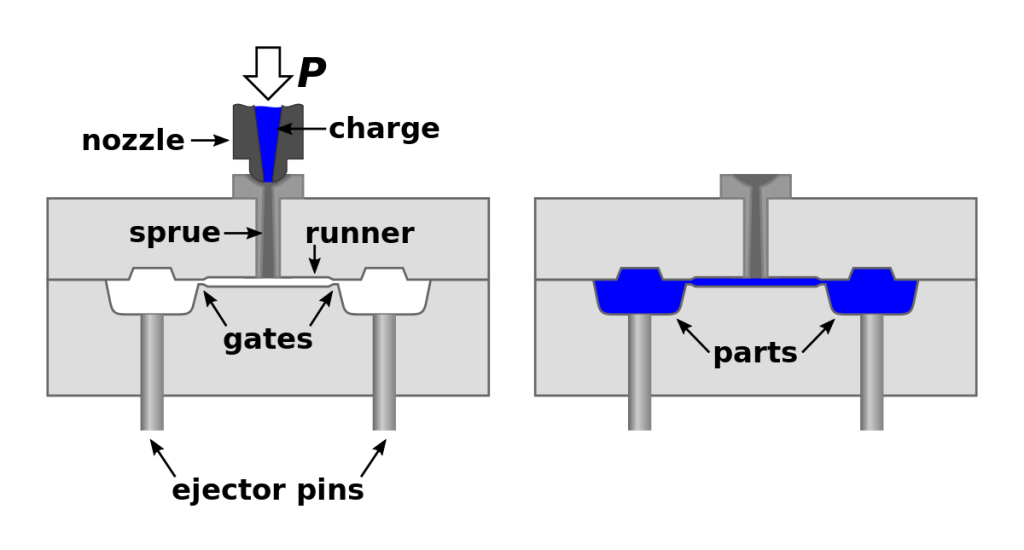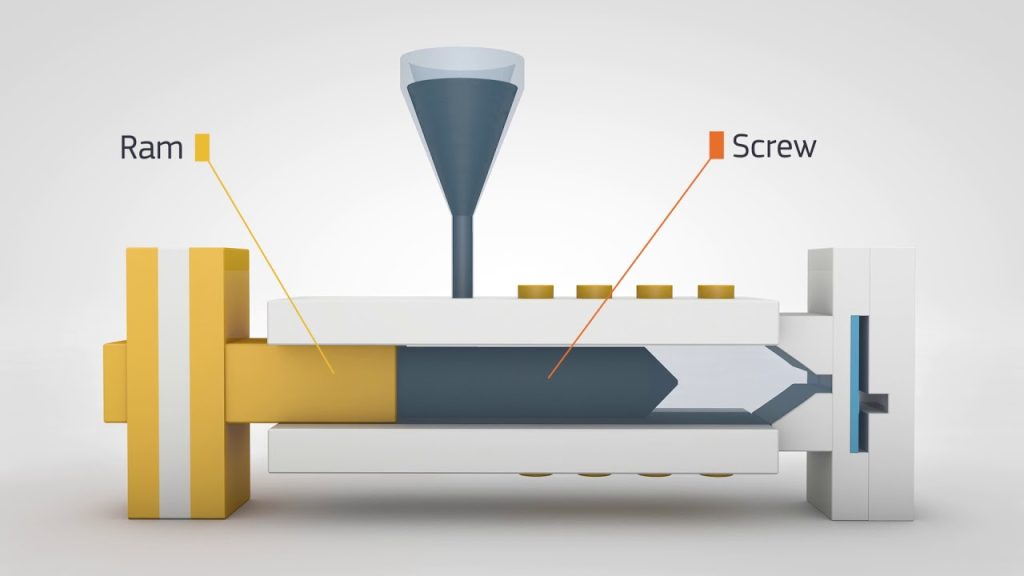Table of Contents
- Frequently Asked Questions
- How do you calculate the number of cavities in injection molding?
- What are the factors that affect the number of cavities in injection molding?
- How does the number of cavities affect the injection molding process?
- What is the ideal number of cavities for an injection molding process?
- What are some common challenges when calculating the number of cavities in injection molding?
Are you trying to figure out how many cavities you need for your injection molding project? Look no further! Calculating the number of cavities is an essential step in the injection molding process, and it can be a daunting task for beginners. In this article, we will break down the steps and provide you with tips and tricks to help you calculate the number of cavities accurately and efficiently.
Injection molding is a widely used manufacturing process for producing plastic parts in large quantities, and the number of cavities plays a crucial role in determining the production output. The more cavities you have, the more parts you can produce in a single cycle, which means higher productivity and lower production costs. So, if you want to optimize your injection molding process and achieve maximum efficiency, read on to learn how to calculate the number of cavities for your project.
How to Calculate Number of Cavity in Injection Molding?
To calculate the number of cavities in injection molding, follow these steps:
- Calculate the total projected area of the part.
- Calculate the available space in the mold.
- Divide the available mold space by the projected area of the part.
The result of this calculation will give you the number of cavities that can fit in the mold. It’s important to note that the number of cavities is limited by the available space in the mold and the size of the part.
How to Calculate Number of Cavity in Injection Molding?
Injection molding is a popular manufacturing process that involves injecting molten material into a mold cavity. One of the most important aspects of injection molding is determining the number of cavities needed for the specific product being produced. In this article, we will guide you through the process of calculating the number of cavities in injection molding.
Understanding Cavity in Injection Molding
A cavity is a void or space within a mold that is filled with molten material to create a product. The number of cavities in an injection mold determines how many products can be produced in a single cycle. The more cavities a mold has, the more products can be made in less time, which can increase productivity and reduce production costs.
To determine the number of cavities needed for a specific product, several factors must be considered, such as the size of the product, the molding machine’s clamping force, and the cycle time required to complete a single cycle.
Factors Affecting the Number of Cavities
Product Size
The size of the product being produced plays a vital role in determining the number of cavities needed. Generally, smaller products require more cavities per mold to increase productivity, while larger products require fewer cavities to maintain quality and consistency.
Molding Machine Clamping Force
The molding machine’s clamping force is the amount of pressure applied to the mold to hold it closed during the injection process. The clamping force is directly related to the number of cavities in the mold. A higher clamping force is required to hold a mold with more cavities, which can increase production costs.
Cycle Time
The cycle time is the time required to complete a single molding cycle. It includes the time required for the injection process, cooling, and ejection of the part. The cycle time is determined by the product’s size, complexity, and the number of cavities in the mold.
Calculating the Number of Cavities
To calculate the number of cavities needed for a specific product, you must first determine the maximum size of the mold that the molding machine can accommodate based on its clamping force. Once you have determined the maximum mold size, you can then calculate the number of cavities based on the product size and the maximum mold size.
Formula to Calculate the Number of Cavities
Number of Cavities = (Maximum Mold Size / Product Size) x Mold Cavitation
Maximum Mold Size
The maximum mold size is determined by the molding machine’s clamping force, which is usually expressed in tons. The tonnage of the molding machine can be used to calculate the maximum mold size that the machine can accommodate.
Product Size
The product size is the size of the final product that will be produced. It is usually expressed in millimeters and includes the part’s length, width, and height.
Mold Cavitation
The mold cavitation is the number of cavities in the mold required to produce the desired number of parts in a single cycle.
Example Calculation
Suppose a molding machine has a clamping force of 250 tons and can accommodate a mold of up to 600 mm x 600 mm. The product size is 100 mm x 100 mm x 50 mm, and the desired output is 20,000 parts per day. The cycle time required to produce a single part is 30 seconds.
Using the formula above, we can calculate the number of cavities required as follows:
Number of Cavities = (600 / 100) x (20,000 / 86,400 x 2) = 3.47
This calculation indicates that we need to use a mold with four cavities to achieve the desired output of 20,000 parts per day.
Benefits of Calculating the Number of Cavities
Calculating the number of cavities required for a specific product is essential for efficient and cost-effective injection molding. By optimizing the number of cavities, manufacturers can reduce production costs, increase productivity, and achieve consistent product quality.
Advantages of Using Multiple Cavities
Increased Productivity
Using multiple cavities in a single mold can significantly increase productivity and reduce production costs by enabling the production of multiple parts simultaneously.
Consistent Product Quality
Using multiple cavities in a single mold can ensure consistent product quality by reducing variability between parts produced in different molds.
Disadvantages of Using Multiple Cavities
Higher Initial Costs
Using multiple cavities in a single mold can be more expensive than using a single cavity mold due to higher initial costs.
Higher Maintenance Costs
Using multiple cavities in a single mold can increase maintenance costs due to the increased complexity and wear and tear on the mold.
Conclusion
Calculating the number of cavities required for a specific product is critical for successful injection molding. By considering factors such as product size, molding machine clamping force, and cycle time, manufacturers can optimize the number of cavities to achieve the desired output while maintaining consistent product quality. Adopting the right number of cavities can reduce production costs, increase productivity, and improve product quality, making it an essential aspect of the injection molding process.
Frequently Asked Questions
Injection molding is a complex process that involves several factors, including the number of cavities in the mold. Here are some frequently asked questions about how to calculate the number of cavities in injection molding.
How do you calculate the number of cavities in injection molding?
The number of cavities in an injection molding process is determined by several factors, including the size and shape of the part, the size of the mold, and the desired production rate. To calculate the number of cavities, you need to consider the following factors:
First, you need to determine the size and shape of the part that you want to produce. This will help you determine the size of the mold required to produce the part. Once you have the mold size, you can then calculate the number of cavities that can fit in the mold while maintaining the required spacing between each cavity.
What are the factors that affect the number of cavities in injection molding?
Several factors can affect the number of cavities in an injection molding process, including the size and shape of the part, the size of the mold, and the desired production rate.
The size and shape of the part can have a significant impact on the number of cavities that can fit in a mold. Complex parts may require larger molds, which may limit the number of cavities that can be included. Similarly, larger parts may require larger molds, which may also limit the number of cavities that can be included.
How does the number of cavities affect the injection molding process?
The number of cavities in an injection molding process can have a significant impact on the overall efficiency and productivity of the process.
A higher number of cavities can increase the production rate, as more parts can be produced per cycle. However, a higher number of cavities can also increase the risk of defects or errors in the parts, as the mold may be more complex and difficult to manage.
What is the ideal number of cavities for an injection molding process?
There is no one-size-fits-all answer to this question, as the ideal number of cavities will depend on several factors, including the size and shape of the part, the size of the mold, and the desired production rate.
In general, it is best to aim for a balance between production rate and part quality. This may mean that a smaller number of cavities is used to ensure that each part is produced with the required level of quality, or a larger number of cavities is used to increase production rates, while carefully monitoring for any defects or errors in the parts.
What are some common challenges when calculating the number of cavities in injection molding?
There are several common challenges that may arise when calculating the number of cavities in an injection molding process.
One of the most significant challenges is determining the ideal balance between production rate and part quality. This may require careful testing and monitoring of the injection molding process to ensure that the desired quality and production rates are achieved. Another challenge is ensuring that the mold can accommodate the desired number of cavities without compromising the quality of the parts.
In conclusion, calculating the number of cavities in injection molding can seem overwhelming at first, but with the right knowledge and tools, it becomes much easier. By understanding the factors that affect cavity number, such as part size, cycle time, and tooling limitations, you can make more informed decisions about your injection molding process.
It’s also important to remember that the number of cavities is just one aspect of the injection molding process. Other factors, such as material selection and mold design, are equally important in achieving a successful final product. By taking a holistic approach to injection molding, you can ensure the best possible results for your project.
In summary, calculating the number of cavities in injection molding is an important step in the process, but it’s not the only one. By considering all the factors that affect your project, you can optimize your injection molding process and achieve the best possible outcome.
Request a quote today!
[contact-form-7 id="1578" title="Contact form"]
Please compress the file into a ZIP or RAR file before uploading. Alternatively, send through your RFQ by email.
enquires@unitymanufacture.com





